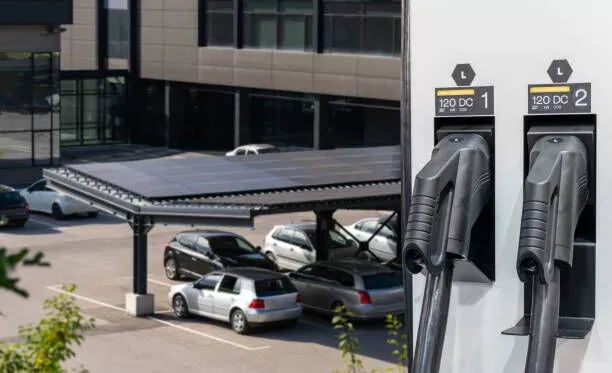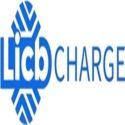Notifications

6 minutes, 32 seconds
-12 Views 0 Comments 0 Likes 0 Reviews

LiCB Charge, a leading EV charger manufacturer in China, delivers dependable AC and DC electric vehicle charging stations along with comprehensive charging solutions.
As electric vehicles (EVs) continue to reshape the future of transportation, understanding how they charge is crucial for both new and experienced EV owners. Among the various charging options available, Mode 3 charging has emerged as the preferred method for everyday use at home, at work, and in public.
Often associated with the Type 2 connector, Mode 3 charging is known for its safety, speed, and smart communication features—making it a cornerstone of the EV charging ecosystem, especially in Europe.
In this guide, we’ll break down what Mode 3 charging is, how it works, how it compares to other modes, and why it’s becoming the gold standard worldwide.
Mode 3 charging refers to a system where an EV connects to an AC charging station using a dedicated cable and a smart communication protocol. Unlike Mode 2 charging (which uses a standard household socket), Mode 3 relies on purpose-built charging infrastructure, such as:
Wall-mounted home chargers (wall boxes)
Workplace charging stations
Public EV charging points
What makes Mode 3 unique is its built-in intelligence: the charger and vehicle exchange data before and during charging to ensure maximum safety, optimal current flow, and device compatibility.
Mostly used in older or imported American/Asian EV models
Less common in Europe
The European standard for AC charging
Ergonomic and robust, with pins for communication and safety
Supports both slow and fast AC charging (up to 22 kW)
Cable Length: Mode 3 cables are usually 5 to 10 meters long, offering flexibility when parking in tight spots or public spaces.
Mode 3 charging supports different power levels depending on your grid connection:
| Power Supply | Output Power | Charging Time |
|---|---|---|
| Single-phase | 3.6 kW – 7.2 kW | 6–8 hours (ideal for overnight charging) |
| Three-phase | 11 kW – 22 kW | 2–3 hours (ideal for public or workplace charging) |
These speeds make Mode 3 significantly faster and more reliable than basic portable chargers.
Mode 3 charging follows a smart and secure process:
Handshake Communication
The charger and EV exchange data to verify compatibility and battery status.
Power Regulation
Charging starts at a suitable power level based on vehicle and infrastructure limits.
Continuous Monitoring
Temperature, voltage, and current are monitored in real time to prevent faults.
Automatic Shut-Off
Charging stops when the battery is full or if an issue is detected.
This closed-loop system ensures safe, efficient, and hands-free charging every time.
| Feature | Mode 2 Charging | Mode 3 Charging |
|---|---|---|
| Installation | Plugged into standard socket | Requires dedicated charger |
| Charging Speed | 2.3 kW – 3.6 kW (slow) | 3.6 kW – 22 kW (fast) |
| Safety Features | Basic in-cable safety box | Advanced built-in safety protocols |
| Portability | Portable cable | Fixed or semi-permanent solution |
| Ideal Use Case | Occasional/emergency use | Daily charging at home, work, or public stations |
In short: Mode 2 is for backup. Mode 3 is for everyday efficiency.
Three-phase support means your EV can charge in just a few hours—not overnight.
Built-in monitoring systems guard against overheating, short circuits, and overcurrent.
Most modern EVs, especially in Europe, support Type 2 Mode 3 charging.
Ideal for home installations, office parking lots, hotels, malls, and city charging points.
Installed as wall-mounted chargers in garages or driveways
Lower electricity costs when scheduled during off-peak hours
Allows employees to fully charge during working hours
Encourages EV adoption and supports green initiatives
Found in parking garages, retail centers, hotels, and highways
Usually deliver 11 kW to 22 kW for quick top-ups
Mode 3 charging continues to evolve. The next wave of advancements may include:
Smart load balancing for multiple EVs
Integration with solar panels and home batteries
Vehicle-to-grid (V2G) energy sharing
App-controlled charging schedules and diagnostics
Governments and energy companies are also expanding public Mode 3 networks to support the growing number of EVs on the road.
Mode 3 charging delivers the perfect balance of speed, safety, and convenience—making it the go-to solution for millions of EV users across Europe and beyond. Whether at home, at work, or on the go, Mode 3 chargers ensure your electric vehicle is always ready to hit the road.
If you’re investing in an EV or planning your own charging setup, Mode 3 is the smart choice for long-term reliability and performance.Know more about Google SEO Directory
China EV Chargers EV Charger Manufacturer Smart EV Chargers Electric Car Chargers Electric Vehicle Chargers Electric Car Charging Stations

